català
español
english
français
Archaeology and political and cultural Catalanism
The origins of an exceptional decade, 1907-1914
World War 1, Mancommunity, IEC and Pere Bosch Gimpera
1915. A first attempt at professionalization
Catalan archaeology’s prodigious decade
Catalan archaeology in and beyond Catalonia
The great adventure in Baix Aragó
The Balearic and Pityuses Islands: the personal project of J. Colominas
The final agony of a prodigious decade
The origins of an exceptional decade, 1907-1914
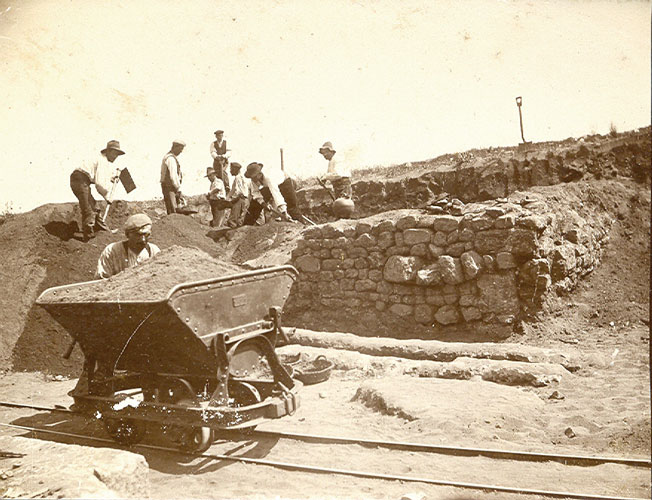
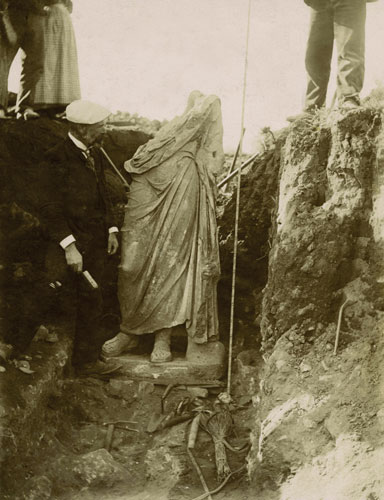
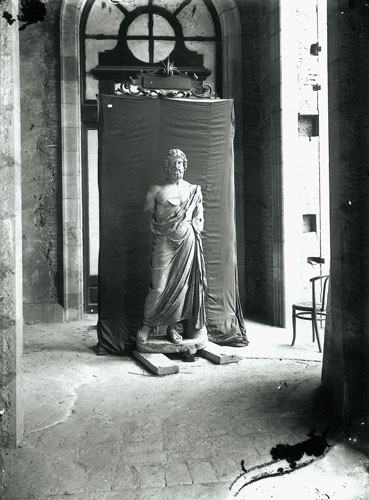
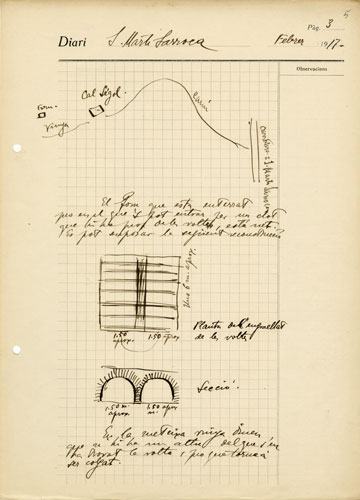
Excavations in the temple area in the Neapolis in Empúries. Between 1907 and 1908.
Unknown author.
MAC Archive.
Emili Gandia Collection.
Emili Gandia during the extraction of the lower part of the sculpture of Asclepius (Empúries). 5 November 1909.
MAC Archive.
Emili Gandia Collection.
First placing of the two main parts of the sculpture of Asclepius before being transported to the Museum of Decorative Art and Archaeology in Barcelona.
Photo Esquirol.
L’Escala Archive.
Esquirol Collection.
Page 3 of a newspaper. Excavations carried out by the Institute of Catalan Studies at Sant Martí Sarroca (Alt Penedès). February 1917.
MAC Archive.
From its very beginning, archaeological research has run like blood through the veins of the Institute of Catalan Studies (IEC). In 1907 the minutes of its Historical-Archaeological Section already reflected the discoveries made by Joan Cabré in Calaceit (Baix Aragó), while, for example, the minutes of the meeting on 6 June 1908 mention the expedition to El Cogul by the Centre Excursionista de Catalonia that was financed by the IEC to the tune of 500 pesetas. In May 1908, Puig i Cadafalch reported to the Archaeological Section the discovery of the kiln at Sant Martí Sarroca, while in June, Josep Pijoan and Adolf Schulten, the latter the excavator of Numancia, visited Empúries once the excavations led by the Museums Board had got underway.
A little while later, on 5 November 1909, the Museums Board’s excavations at Empúries discovered the first remains of the statue of Asclepius, which was to become one of the main icons of the Noucentista movement. The philosophy behind the IEC’s archaeological excavations was one of openness: in 1911 Jordi Rubió visited a number of excavations led by the Marquis of Cerralbo, while, in the opposite sense, Professor Hugo Obermaier was welcomed to the IEC’s HQ in Barcelona.
During these years, the IEC and the Barcelona Museums Board worked together in close collaboration, which greatly aided the study and wider recognition of the ruins of Empúries. The pages of the IEC’s annual reports faithfully reflect this process.
Josep Pijoan and the School of Classical Studies in Rome
In the context of these dynamic exchanges of knowledge, collaborations and, very soon, international contacts, Josep Pijoan persuaded the Institute of Catalan Studies to propose to Pérez Caballero, a Spanish government minister, the creation of a School of Classical Studies in Rome along the lines of other prestigious academic bodies such as the British and French Schools and the American School of Classical Studies.
This idea was the embryo of the project that led eventually to the setting up of the Spanish School of History and Archaeology in Roma, inaugurated on 3 June 1910. The heart and soul of the School from January 1911 onwards and throughout its first years was the indefatigable Josep Pijoan, one of the founder members of the IEC and its first secretary. He would spend many years struggling futilely to ensure that Catalan as a language was represented on an equal footing to Spanish in the official acts and publications of the new School in Rome.
Cover of the Catalogo della mostra archeologica nelle terme di Diocleziano at the International Exhibition of Art in Rome in 1911. The Institute collaborated actively with this exhibition, which opened in April 1911 to mark the 50th anniversary of the unification of Italy.
MAC Library.
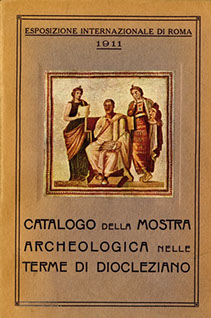
The Institute of Catalan Studies and archaeological research up to 1914
Throughout the years that led up to the key year of 1914, the IEC’s archaeological research continued apace, both directly and indirectly and in collaboration with other institutions. Each year it funded generously the excavations at Capellades; in November 1911 the Historical-Archaeological Section put Manuel Cazurro in charge of the study of the glass remains found at Empúries, while in September 1912 Cazurro presented the results of a stratigraphic study carried out in Empúries and Puig i Cadafalch exhibited photographs of a Hellenic bust and the polychrome ‘Mosaic of the Fishes’ from the first century BC that had been discovered that year in the Neapolis in Empúries. In 1913 the Historical-Archaeological Section studied the ceramic terra sigillata Roman moulds presented by Serra Vilaró.
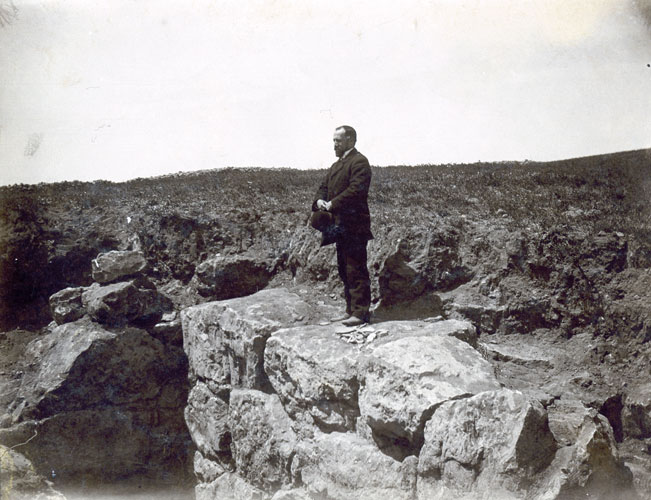

Manuel Cazurro at the excavations in Empúries in 1908.
MAC Archive.
Emili Gandia Collection
Floor plan of the southern zone of the Neapolis in Empúries. Part of the walls and the stoa are shown. 1909. Plan drawn by Manuel Cazurro.
MAC Archive.
Emili Gandia Collection.
Abric Romaní at Capellades. First third of 20th century.
Centre Excursionista de Catalonia. Photograph: Francesc Alsina i Vila.